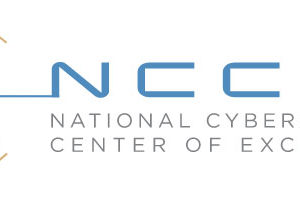Darkside Ransomware: Best Practices for Preventing Business Disruption from Ransomware Attacks

(Updated May 19, 2021): Click here for a STIX package of indicators of compromise (IOCs).
Note: These IOCs were shared with critical infrastructure partners and network defenders on May 10, 2021. The applications listed in the IOCs were leveraged by the threat actors during the course of a compromise. Some of these applications might appear within an organization's enterprise to support legitimate purposes; however, these applications can be used by threat actors to aid in malicious exploitation of an organization's enterprise. CISA and FBI recommend removing any application not deemed necessary for day-to-day operations.
The Cybersecurity and Information Security Agency (CISA) and the Federal Bureau of Investigation (FBI) are aware of a ransomware attack affecting a critical infrastructure (CI) entity—a pipeline company—in the United States. Malicious cyber actors deployed Darkside ransomware against the pipeline company’s information technology (IT) network. At this time, there is no indication that the
entity’s operational technology (OT) networks have been directly affected by the ransomware.
CISA and FBI urge CI asset owners and operators to adopt a heightened state of awareness and implement the recommendations listed in the Mitigations section of this Joint Cybersecurity Advisory, including implementing robust network segmentation between IT and OT networks; regularly testing manual controls; and ensuring that backups are implemented, regularly tested, and isolated from network connections. These mitigations will help CI owners and operators improve their entity's functional resilience by reducing their vulnerability to ransomware and the risk of severe business degradation if impacted by ransomware.
Darkside Ransomware: Best Practices for Preventing Business Disruption from Ransomware Attacks
(Updated May 19, 2021): Click here for a STIX package of indicators of compromise (IOCs). Note: These IOCs were shared with critical infrastructure partners and network defenders on May 10, 2021. The applications listed in the IOCs were leveraged by the threat actors during the course of a compromise. Some of these applications might appear within an organization's enterprise to support legitimate purposes; however, these applications can be used by threat actors to aid in malicious exploitation of an organization's enterprise. CISA and FBI recommend removing any application not deemed necessary for day-to-day operations.
The Cybersecurity and Information Security Agency (CISA) and the Federal Bureau of Investigation (FBI) are aware of a ransomware attack affecting a critical infrastructure (CI) entity—a pipeline company—in the United States. Malicious cyber actors deployed Darkside ransomware against the pipeline company’s information technology (IT) network. At this time, there is no indication that the
entity’s operational technology (OT) networks have been directly affected by the ransomware.
CISA and FBI urge CI asset owners and operators to adopt a heightened state of awareness and implement the recommendations listed in the Mitigations section of this Joint Cybersecurity Advisory, including implementing robust network segmentation between IT and OT networks; regularly testing manual controls; and ensuring that backups are implemented, regularly tested, and isolated from network connections. These mitigations will help CI owners and operators improve their entity's functional resilience by reducing their vulnerability to ransomware and the risk of severe business degradation if impacted by ransomware.
Mitigations
CISA and FBI urge CI owners and operators to apply the following mitigations to reduce the risk of compromise by ransomware attacks.
- Require multi-factor authentication for remote access to OT and IT networks.
- Enable strong spam filters to prevent phishing emails from reaching end users. Filter emails containing executable files from reaching end users.
- Implement a user training program and simulated attacks for spearphishing to discourage users from visiting malicious websites or opening malicious attachments and reenforce the appropriate user responses to spearphishing emails.
- Filter network traffic to prohibit ingress and egress communications with known malicious IP addresses. Prevent users from accessing malicious websites by implementing URL blocklists and/or allowlists.
- Update software, including operating systems, applications, and firmware on IT network assets, in a timely manner. Consider using a centralized patch management system; use a risk-based assessment strategy to determine which OT network assets and zones should participate in the patch management program.
- Limit access to resources over networks, especially by restricting RDP. After assessing risks, if RDP is deemed operationally necessary, restrict the originating sources and require multi-factor authentication.



